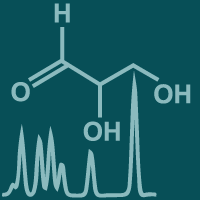Topic Editors

2. Manipal Institute of Technology, Manipal University, Manipal, India
Application of Chromatography for Point of Care Diagnosis of Noncommunicable Diseases

Topic Information
Dear Colleagues,
The diagnosis of non-communicable diseases typically involves a comprehensive approach that combines medical history, physical examination, laboratory tests, and imaging studies. Biomarker detection has emerged as a valuable diagnostic tool for specific diseases, but precise and rapid quantification of disease-specific biomarkers requires analytical methods that can enable fast sampling and preconcentration from sample matrices. Therefore, solid-phase extraction and micro-extraction techniques are gaining popularity in medical diagnosis due to their unique advantages, including integrated sampling, extraction, and analysis by GC-MS or LC-MS. This Special Issue focuses on the latest discoveries in the field of non-communicable disease diagnosis and aims to bring together clinical and primary researchers to submit interdisciplinary works on cutting-edge techniques, including sample preparation techniques and chromatography methods. The topic covers the latest progress in the development of point-of-care tests, molecular diagnostic tests, animal models for diseases, appropriate dosages and formulations, as well as artificial intelligence and machine learning predictive tools/models for the following diseases (but not limited to): 1. COPD 2. Stroke 3. Alzheimer's disease 4. Liver disease 5. Chronic kidney disease 6. Sickle cell disease/thalassemia 7. Cancer—breast, cervix, oral, and lung 8. Diabetes 9. Cardiovascular disease.
Dr. Chiranjit Ghosh
Dr. Liqin Chen
Prof. Dr. Keshava Balakrishna
Prof. Dr. Chiranjay Mukhopadhyay
Topic Editors
Keywords
- diagnosis; breath
- metabolites
- biomarker
- point-of-care
- non-invasive
- VOC
- gas chromatography
- liquid chromatography
- solid phase extraction
Participating Journals
| Journal Name | Impact Factor | CiteScore | Launched Year | First Decision (median) | APC | |
|---|---|---|---|---|---|---|

Analytica
|
- | 1.8 | 2020 | 12.8 Days | CHF 1000 | Submit |

Metabolites
|
3.4 | 5.7 | 2011 | 13.9 Days | CHF 2700 | Submit |

Separations
|
2.5 | 3.0 | 2014 | 12.4 Days | CHF 2600 | Submit |

Toxins
|
3.9 | 7.5 | 2009 | 18.9 Days | CHF 2700 | Submit |

Molecules
|
4.2 | 7.4 | 1996 | 15.1 Days | CHF 2700 | Submit |

MDPI Topics is cooperating with Preprints.org and has built a direct connection between MDPI journals and Preprints.org. Authors are encouraged to enjoy the benefits by posting a preprint at Preprints.org prior to publication:
- Immediately share your ideas ahead of publication and establish your research priority;
- Protect your idea from being stolen with this time-stamped preprint article;
- Enhance the exposure and impact of your research;
- Receive feedback from your peers in advance;
- Have it indexed in Web of Science (Preprint Citation Index), Google Scholar, Crossref, SHARE, PrePubMed, Scilit and Europe PMC.




